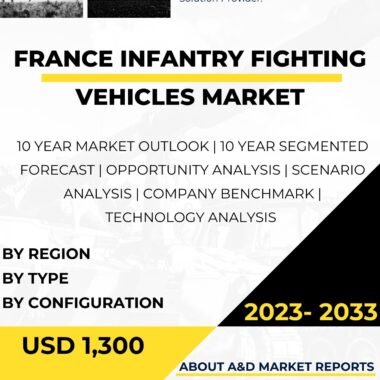Description
Infantry Fighting Vehicles (IFVs) are critical assets in Canada’s defense industry, designed to provide mobility, firepower, and protection for infantry units during ground operations. These versatile armored vehicles are an essential component of the Canadian Armed Forces (CAF), enhancing the effectiveness of ground forces in various mission scenarios, including combat operations, reconnaissance, and urban warfare. IFVs offer a high level of survivability and combat support, making them indispensable in modern military operations.
One of the primary applications of Infantry Fighting Vehicles in Canada’s defense sector is in mechanized infantry units. These vehicles are specifically designed to transport and support infantry troops on the battlefield. IFVs are equipped with advanced armor, providing protection against small arms fire, artillery shrapnel, and improvised explosive devices (IEDs). Their mobility allows infantry units to quickly deploy and maneuver on the battlefield, enhancing the ability to seize and hold key terrain and engage enemy forces effectively.
Additionally, IFVs are armed with potent weapon systems, including autocannons, machine guns, and anti-tank guided missiles, enabling them to engage enemy armored vehicles and provide fire support to dismounted infantry. The combination of firepower and mobility makes IFVs highly effective in neutralizing enemy threats and supporting ground forces during offensive and defensive operations.
The Canadian defense industry invests in research and development to continually enhance IFV technologies. Collaboration with domestic companies, academia, and international partners fosters knowledge sharing and technology transfer, positioning Canada at the forefront of IFV innovation.
To ensure the security and reliability of IFVs, robust cybersecurity measures are implemented to protect communication channels and data transmission. Additionally, these vehicles undergo rigorous testing and validation to ensure their effectiveness, safety, and reliability in military operations.
Ethical considerations are addressed in the use of IFVs, particularly in scenarios involving civilian populations and international humanitarian laws. Ensuring compliance with ethical guidelines and international regulations is essential to prevent misuse and minimize collateral damage in conflict situations.
The integration of artificial intelligence (AI) with IFVs is an emerging trend in Canada’s defense industry. AI-powered systems can analyze sensor data in real-time, recognize patterns, and optimize the IFV’s operation for increased efficiency and situational awareness.
Moreover, IFVs are extensively used in peacekeeping and stabilization missions, where they provide support to ground forces and facilitate humanitarian assistance efforts. These vehicles enable Canadian troops to patrol and secure areas, establish and maintain peace, and protect civilians in conflict-affected regions.
IFVs also play a crucial role in disaster response and relief operations. Their mobility and capacity to carry personnel and equipment make them valuable assets in reaching and assisting affected populations during natural disasters and emergencies.
The integration of advanced communication systems in IFVs facilitates coordination and information sharing between ground forces and higher command structures, enhancing situational awareness and command and control capabilities.
In addition to their offensive and defensive capabilities, IFVs can be modified for various specialized roles. Some variants are equipped for reconnaissance and intelligence-gathering missions, equipped with advanced sensors and surveillance equipment. Others are configured for engineer support, enabling the rapid clearance of obstacles and the improvement of mobility on the battlefield.
IFVs contribute to Canada’s international defense partnerships. The interoperability of these vehicles with allied nations fosters cooperation and enhances collective defense capabilities.
In conclusion, Infantry Fighting Vehicles are critical assets in Canada’s defense industry, providing essential capabilities to support and protect infantry units during ground operations. These versatile armored vehicles enhance the mobility, firepower, and survivability of mechanized infantry units, making them indispensable in modern military operations. The Canadian defense industry invests in research and development to continually advance IFV technologies, positioning the country at the forefront of IFV innovation. Responsible and secure use of IFVs is prioritized through robust cybersecurity measures and adherence to ethical guidelines. IFVs play a pivotal role in enhancing the CAF’s ground capabilities and preparedness to address emerging threats and challenges. Moreover, these vehicles foster cooperation and interoperability with allied nations, contributing to Canada’s international defense partnerships. As technology continues to evolve, IFVs will remain critical assets in Canada’s defense arsenal, enabling the country to respond effectively to evolving security dynamics and safeguard its national interests.




